Sigma C 150-600 mm f/5-6.3 DG OS HSM
3. Build quality and image stabilization
In the photo below the tested Sigma C 150–600 mm is positioned next to two other Sigma devices: the 17–50 mm f/2.8 EX OS HSM and the A 35 mm f/1.4 HSM.
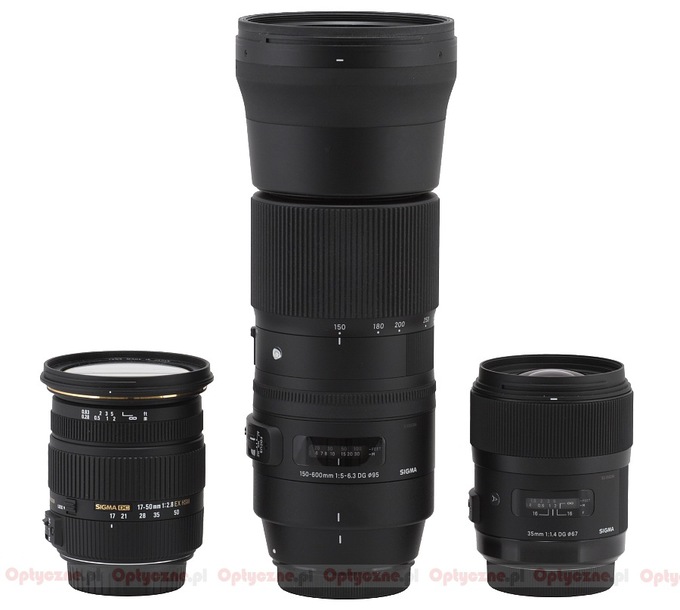 |
Please Support UsIf you enjoy our reviews and articles, and you want us to continue our work please, support our website by donating through PayPal. The funds are going to be used for paying our editorial team, renting servers, and equipping our testing studio; only that way we will be able to continue providing you interesting content for free. |
- - - - - - - - - - - - - - - - - - - - - - - - - - - - - - - - - - - - - - - - - - - - - - - -
The tested lens starts with a metal mount surrounding a contact plate and a rear element with a diameter of about 26 mm. At the 150 mm focal length that element is hidden less than 2 cm inside the casing and the inner tube remains black and matted properly; there are no shiny parts, electronics or otherwise, visible anywhere. The producer ensures that the lens’s bayonet mount features rubber sealing, making it dust-proof and splash-proof.
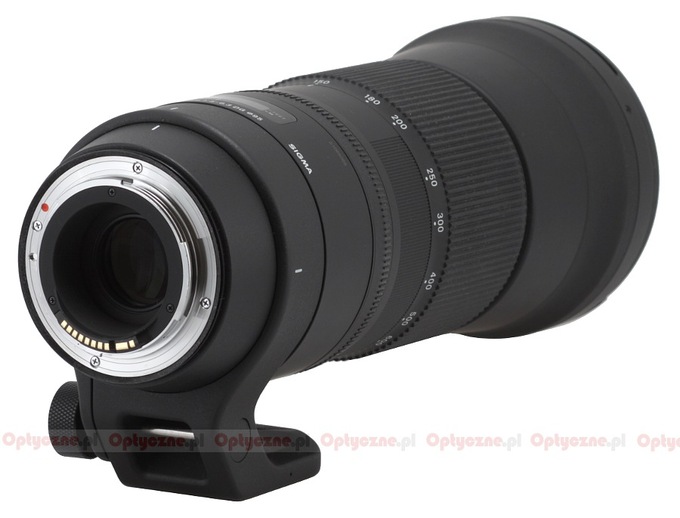 |
The first part of the proper tube is made of smooth metal covered by black paint. You can see a white dot, making the alignment with a camera easier, and markings which show the proper position for dismantling the tripod adapter. The adapter itself is a part of the accessory kit and it is made of magnesium composites; despite the fact that it is rather small it seems to work properly well - you certainly cannot call it unstable.
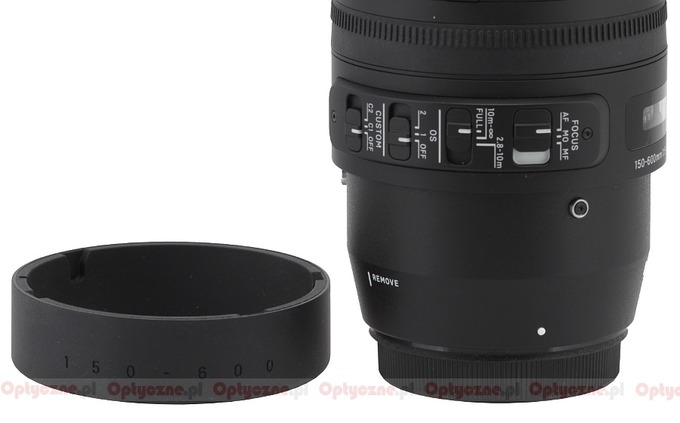 |
Sigma’s attention to detail is indeed praiseworthy. When you take the adapter off and you want to use the lens without it you have to admit it looks a bit less stylish. In order to take care of that the producer included a rubber stopper which can be put on the part where the tripod adapter was attached. As a result the appearance of the lens is improved – small thing but quite enjoyable. Definitely customers would appreciate such a thoughtful gesture.
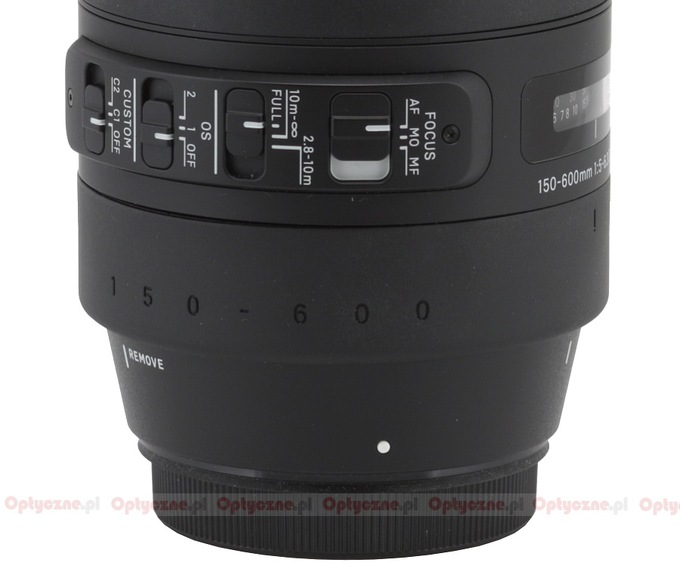 |
Moving on along the tube of the lens you find a window with a distance scale expressed in meters and feet. Below there is an inscription stating the parameters of the lens and on the left you see an array of switches. The first of them, FOCUS, is used to control the focusing mechanism mode, offering three choices: AF, MO and MF. Apart from standard settings (the manual focus ring works even if the lens is in the AF mode) you also get the MO (Manual Override) mode which allows you to move the ring even though the autofocus is still working. The next switch limits the autofocus working range. There are three possible positions: FULL, from 10 metres to infinity and from 2.8 metres to 10 metres. Then you see the OS switch, responsible for the optical stabilization (modes 1, 2 and OFF) and finally there is a CUSTOM switch with three options: OFF, C1 and C2. It allows you to choose between focusing mechanism modes saved by the user after calibrating the lens by the Sigma USB Dock.
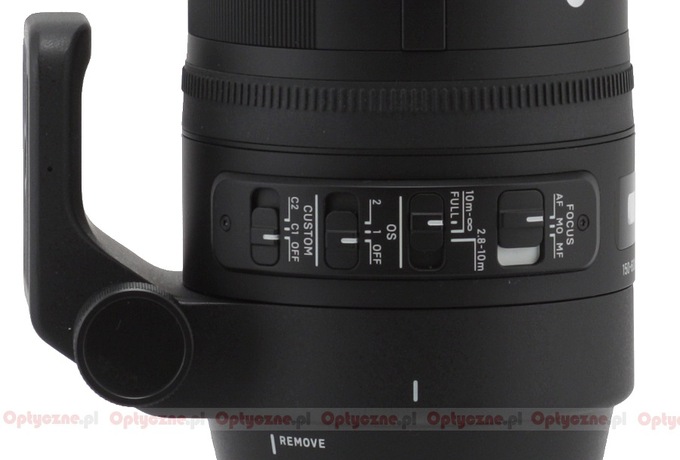 |
Further on you see a manual focus ring. Taking into account the overall dimensions of the lens the ring seems small, being just 19 mm wide (for example the Sport 150-600 mm model has a ring as wide as 45 mm). The ribbing on the ring is narrow too, taking just one third of its width. Still the ring movements are smooth, even and well-damped across the whole range. Running through the whole scale takes a turn through an angle of about 130 degrees.
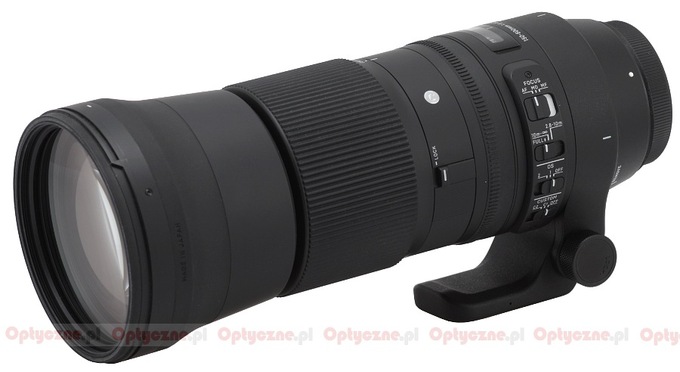 |
Then you find an immobile part of the casing on which there is a “C” letter, indicating that the lens belongs to the ‘Contemporary’ series, and a LOCK switch which blocks the zoom position. What’s interesting the switch works not only for both ends of the range but also at those focal lengths that are marked on the casing. There is also another very useful feature of the switch available: if you have a focal length blocked and you want to release it you don’t have to reach the switch with your finger, it’s enough you shift the zoom ring more vigorously and the switch releases the blockade on its own.
A big zoom ring, as wide as 64 mm, is actually the next part of the lens. Most of it is covered by comfortable rubber ribs under which there are focal lengths markings at 150, 180, 200, 250, 300, 400, 500 and 600 mm.
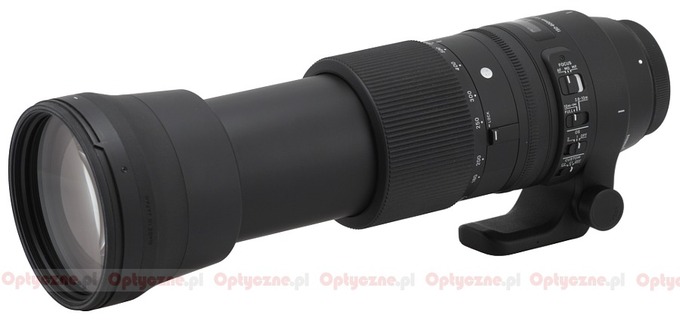 |
The following part of the lens consists of a widening casing, with the front element system and an inscription “Made in Japan”. That part extends with the increase of the focal length on a smooth, uniform, solidly-looking tube which is made of plastics.
The front element is 90 mm in diameter, only slightly hidden inside the barrel and surrounded by a non-rotating filter thread, 95 mm in diameter. Contrary to the “Sport” version you get a hood thread as well (and the hood is added to the accessory kit).
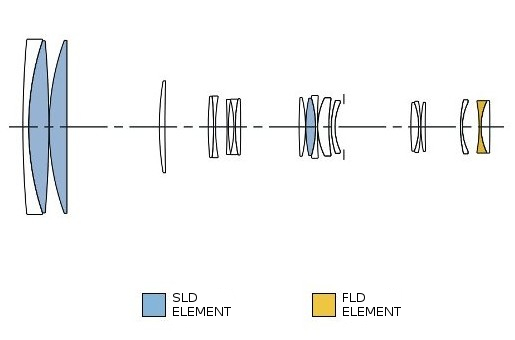 |
The optical construction consists of 20 elements positioned in 14 groups. Three of them are made of low-dispersion SLD glass and one – of FLD glass, which properties are similar to those of fluorite. Inside you also find an aperture with nine diaphragm blades which can be closed down to f/22 at the shortest focal length and to f/29 at the longest one. It is also worth adding that the front and back elements are covered by a hydrophobic layer and a special anti grease coating.
Buyers get a hard case, a hood, a tripod adapter with a stopper, a strap and both caps along with the lens in the box.
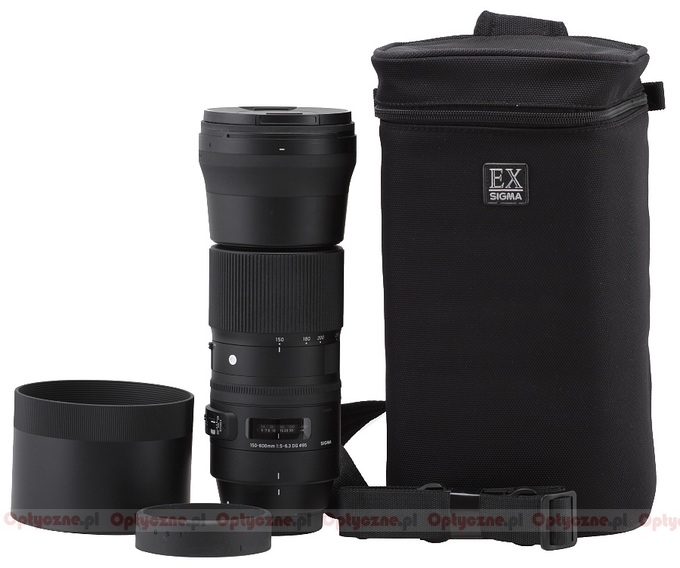 |
Optical stabilization
Sigma have stopped publishing their lenses’ official optical stabilization efficiency for some time now but of course it doesn’t mean we stopped testing it. At 600 mm focal length we took several dozens of photos at every shutter speed ranging from 1/640 to 1/8 of a second, with the stabilization switched on and off. The graph below shows the percentage of blurred photos depending on the shutter speed expressed in EV and 0 EV is an equivalent of 1/400 of a second.
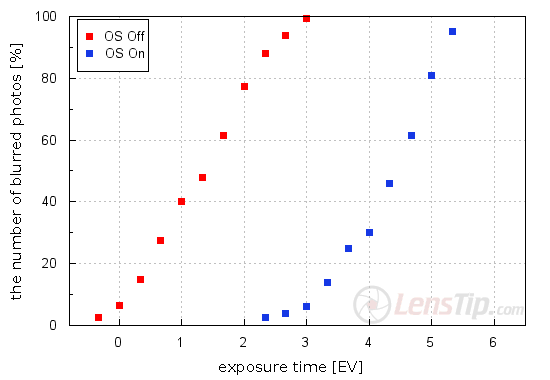
It is clear that the maximum distance between both curves amounts to 3.0-3.3 EV and such is, in our opinion, the tested lens’s stabilization system efficiency. It is a good result but hardly a record-breaking one. What’s interesting the more expensive Sigma S 150–600 mm had a bit worse efficiency (less than 3.0 EV), and the Tamron 150–600 mm was a bit better (3.5 EV).






